So, you’re out driving minding your regular driving business, when suddenly your car starts to act weird.
You feel that the ride becomes a bit bumpy, your car starts draging to one side or the other, and you might even hear a flopping sound.
You do the wise thing and pull over as soon as you can. You get out of your car, check your tires and see that you have a flat.
But hopefully you were prepared for such an occurance. If you were, here’s how to safely change a flat tire.
Equipment Required for Changing a Tire
- Lug wrench
- Jack
- Spare tire
- Car owner’s manual
- Optional Equipment for Changing a Tire
- Wheel wedges
- Gloves
- Flashlight
- Reflective triangles
It’s a good idea to have all of these items in your car at all times, especially if you know you will go on a longer travel, further away from civilization.
If you have these items available, here’s an infographic showing you a step by step guide of how to safely change a flat tire. Further down on the site you can see the steps written as well.
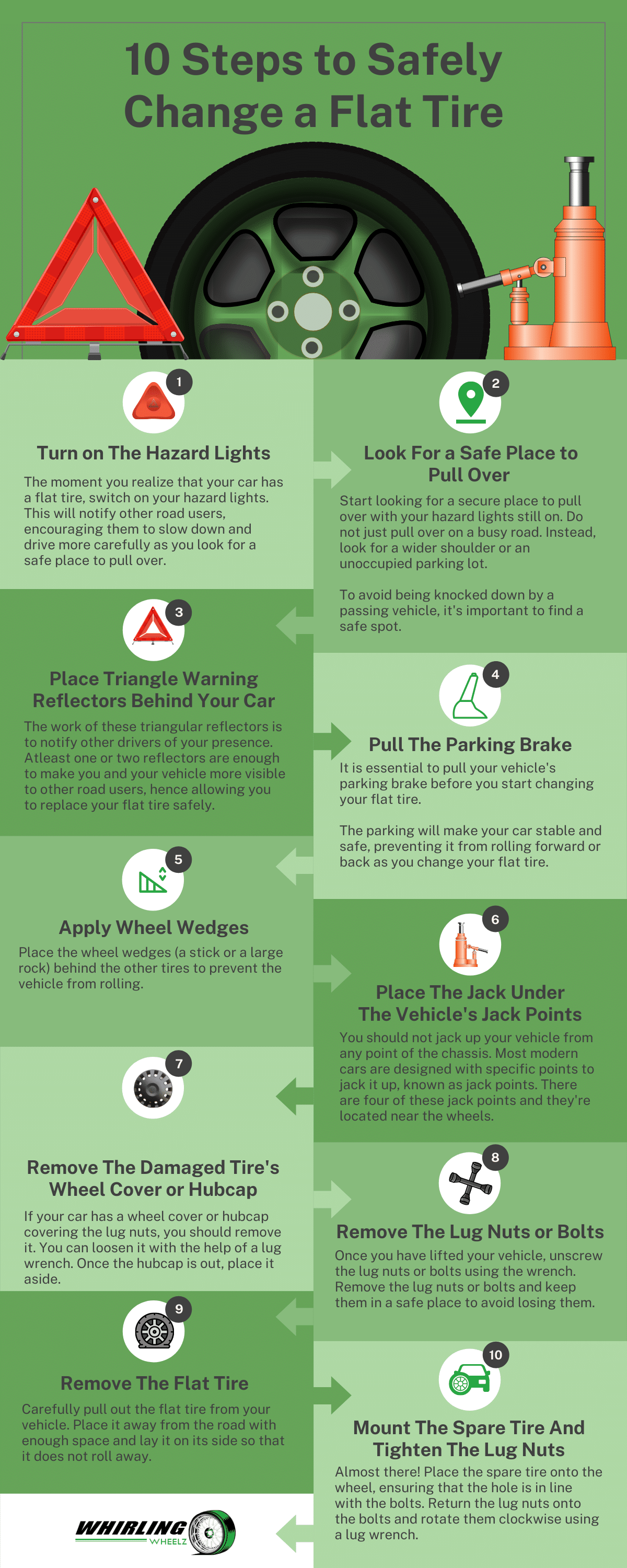
Share This Infograph On Your Site
Now as promised, here are the text version of the 10 steps to safely changing a flat tire as well.
The 10 Steps to Safely Change a Flat Tire
1. Turn on The Hazard Lights
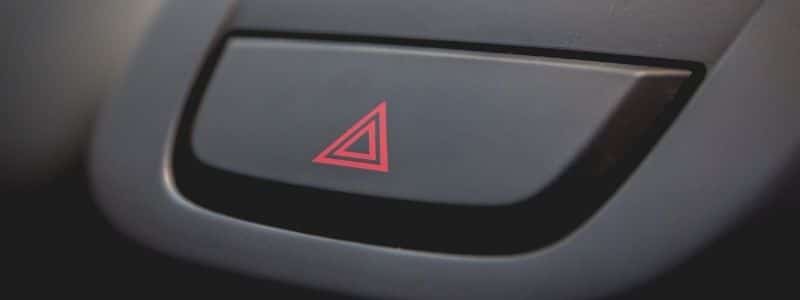
The moment you realize that your car has a flat tire, switch on your hazard lights. This will notify other road users, encouraging them to slow down and drive more carefully as you look for a safe place to pull over.
2. Look For a Safe Place to Pull Over

Start looking for a secure place to pull over with your hazard lights still on. Do not just pull over on a busy road. Instead, look for a wider shoulder or an unoccupied parking lot.
Many drivers have been knocked down by passing vehicles as they try to change flat tires on the side of the road. Therefore, you need a safe place to minimize the risks of injuries.
3. Place Triangle Warning Reflectors Behind Your Car
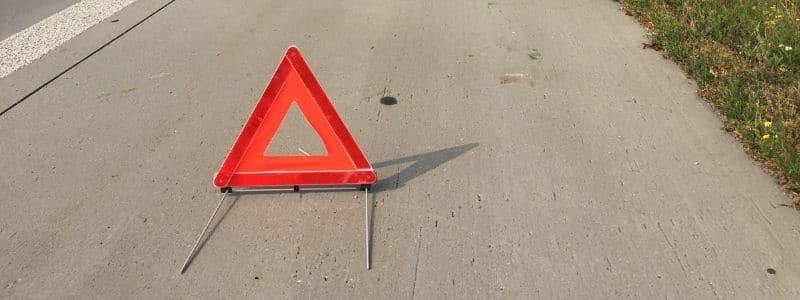
Up to this point, you should have already identified a safe place to park your vehicle, and then you should place your triangle reflectors behind your car.
The work of these triangular reflectors is to notify other drivers of your presence. Atleast one or two reflectors are enough to make you and your vehicle more visible to other road users, hence allowing you to replace your flat tire safely.
4. Pull The Parking Brake

It is essential to pull your vehicle’s parking brake before you start changing your flat tire.
The parking will make your car stable and safe, preventing it from rolling forward or back as you change your flat tire.
5. Apply Wheel Wedges

Place the wheel wedges (a stick or a large rock) behind the other tires to prevent the vehicle from rolling.
6. Place The Jack Under The Vehicle’s Jack Points
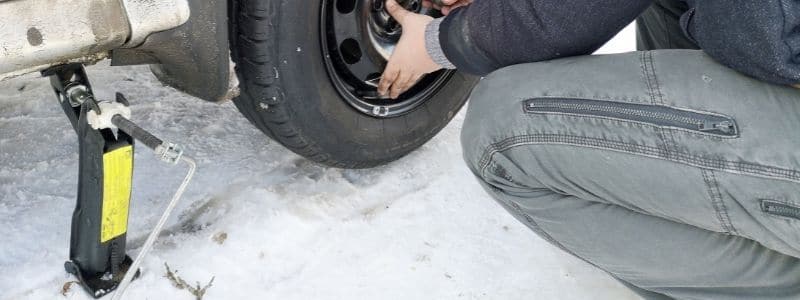
You should not jack up your vehicle from any point of the chassis. Most modern cars are designed with specific points to jack it up, known as jack points. These points are four and are located near the wheels.
7. Remove The Damaged Tire’s Wheel Cover or Hubcap

If your car has a wheel cover or hubcap covering the lug nuts, you should remove it. You can loosen it with the help of a lug wrench. Once the hubcap is out, place it aside.
8. Remove The Lug Nuts or Bolts
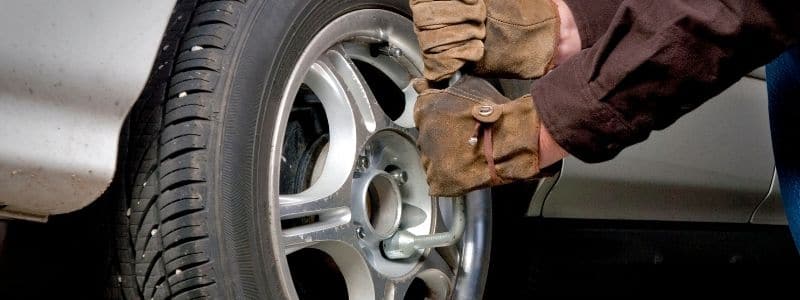
Once you have lifted your vehicle, unscrew the lug nuts using the lug wrench. Remove the lug nuts and keep them in a safe place to avoid losing them.
9. Remove The Flat Tire
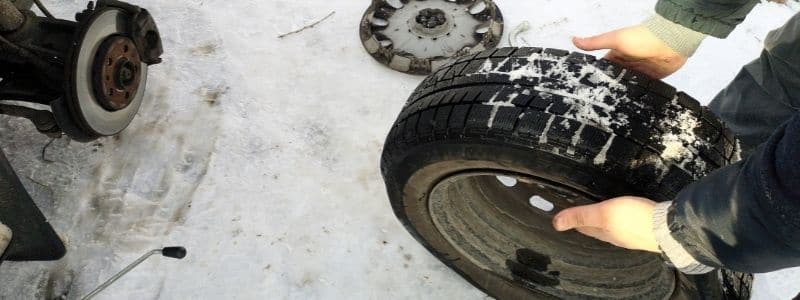
Carefully pull out the flat tire from your vehicle. Place it away from the road with enough space and lay it on its side so that it does not roll away.
10. Mount The Spare Tire And Tighten The Lug Nuts
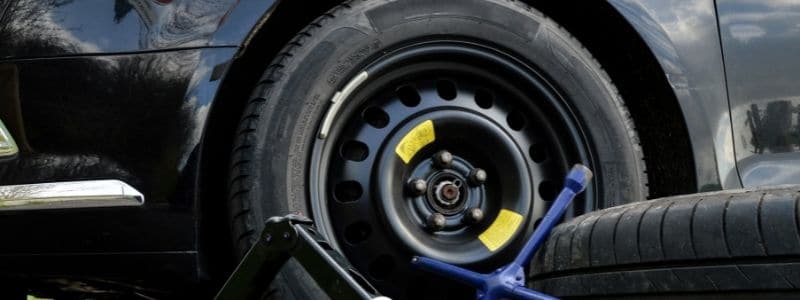
Almost there! Place the spare tire onto the wheel, ensuring that the hole is in line with the bolts. Return the lug nuts onto the bolts and rotate them clockwise using a lug wrench.
Confirm that your lug nuts are tight enough using your hand before continuing. For additional power, you can step on the lug wrench still inserted into the lug nut and then carefully jump on it.
Tire Maintenance Ideas to Help You Avoid a Flat
Taking good care of your vehicle tires does not guarantee that you will not get a flat, though it can lower the chances. Regular tire maintenance can extend your tire life, improve your fuel efficiency, and make your car safe to drive.
According to the RMA (Rubber Manufacturers Association) tire maintenance checklist, you can do a few things to help maintain your tires in a good state. Therefore, you should check your tire pressure regularly, rotate them according to your car manufacturer’s advice, align and balance them periodically.
Signs You Might Get a Flat
Regular maintenance can help maintain your tires in good working condition, but it is still wise to check them frequently.
The RMA advises sparing about five minutes every month to check any early signs of vehicle tire failure, such as; uneven tread wear, cracks in the tire sidewall, bulges, and excessively worn-out tread.
If you see any of these signs, visit an auto repair shop to have your tire replaced or repaired.
Frequently Asked Questions
How Much Will a Flat Tire Repair Cost You?
If you need to have your flat tire repaired by a professional, expect to pay between $3 to $5. However, the size of the puncture will determine how much you will spend on having your flat tire repaired.
A tire replacement will cost you an average of 10 dollars (not including the new tire).
How Long Does it Take to Repair a Flat Tire?
Changing a flat tire is not a big deal if you have the necessary skills and experience. However, it might be daunting for an amateur. Also, the repair will depend on the cause of your flat.
For instance, if a screw is in your tire, you need a patching service and tire inflation. Bent rims need rim straightening to correct flat tire issues. If your flat tire had caused severe damage or it was as a result of an old tire, you should think of replacing it.
Therefore, the amount of time it may take depends on how fast you can find the hole, the amount of air lost, and how long it may take to jack up the car. In general, it can take anywhere from ten minutes to three hours to change a flat tire.
When is The Best Time to Change a Flat Tire?
The right time to change your flat tire is immediately when you realize the problem. If it is an old tire, don’t repair, acquire new ones instead. This will save your life and that of your car. Consequently, it will make your driving experience more enjoyable.
Is it Possible to Drive With a Flat Tire?
You can drive with a flat tire, but it’s not a good idea. Driving on a flat tire may cause damage to your rim and your vehicle. If you drive fast with a flat tire you can even risk an accident.
If you must drive with a flat tire, make sure that you can take the risk of damaging something, that your destination is very close and that you drive slowly. With that said, I don’t recommend driving with a flat at any time.
Can I Change a Flat Tire in The Rain?
The short answer is yes.
You can replace a flat tire in the rain, but there is additional equipment you should have, such as protective gear. However, changing a flat tire in the rain is not different from doing the same in good weather.
Final Thoughts
Your spare tire is not designed for long-term use, so after any replacement, your next stopover should be the tire shop. The mechanics will check if you need a new tire of your flat that can be fixed.
Hi, my name is Niklas, the head content creator & CEO of Whirling Wheelz. I am very interested in vehicles of all kinds, mainly cars. I have a car mechanics degree from high school and a big hobby of mine is to follow the WRC (World Rally Championship) both online and through travel.


